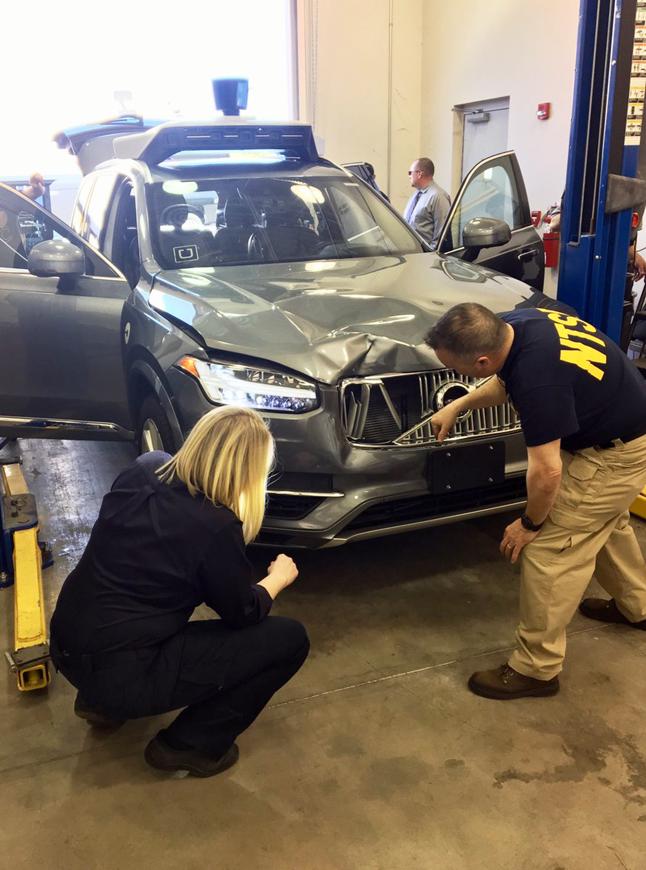
SAN FRANCISCO — More than a second before a self-driving car operated by Uber struck and killed a pedestrian in March, the vehicle’s computer system determined it needed to brake to avoid a crash. But a built-in emergency braking system had been disabled while the car was in autonomous mode to ensure a smoother ride, according to the preliminary report of federal regulators investigating the crash.
The initial findings, released Thursday by the National Transportation Safety Board, confirmed early police reports about the episode, which was the first known pedestrian fatality involving a driverless car.
The report also affirmed what many self-driving car experts said in the days after the crash: Uber’s cars are loaded with sensors and cameras that should have detected a pedestrian with plenty of time to stop. But it failed through a combination of a computer system not responding properly to the pedestrian’s presence and a distracted safety driver.
The safety board said the Uber car’s computer system spotted 49-year-old Elaine Herzberg pushing a bicycle across a road at night in Tempe, Ariz., six seconds before impact. The system classified Herzberg, who was not in a crosswalk, first as an unrecognized object, then as another vehicle, and finally as a bicycle. But it did not slow down before barreling into her.
The agency said Uber’s safety driver is expected to intervene to avoid a crash but the driver, who was not impaired, did not try to start braking until less than a second after impact.
The vehicle operator, who was seen on dashboard cameras looking down and away from the road before the crash, told investigators that she had been monitoring the self-driving car system in the center of the car’s dashboard.
A toxicology report for the victim came back positive for methamphetamine and marijuana, investigators said.
The fatal crash has raised questions about the safety of testing self-driving cars on public roads and whether companies, in their rush to be among the first to deploy this breakthrough technology, are taking enough precautions to prevent harm to other drivers and pedestrians.
The New York Times reported that Uber’s cars had been struggling to meet reliability standards in Arizona before the crash. Its cars required human drivers to intervene much more frequently than those of its competitors. Uber was also asking safety drivers to do more — driving solo instead of in pairs — even though the cars were still performing erratically.
Sarah Abboud, an Uber spokeswoman, said the company has worked closely with investigators over the last two months. It has started a review of its self-driving car program and it plans to announce changes to its safety procedures in the coming weeks.
Immediately after the crash, Uber suspended testing of its self-driving cars and has not yet returned to the road.
On Wednesday, the company said it was shutting down its testing operations in Arizona and laying off 300 employees, saying it wanted to move testing closer to its engineering hubs in Pittsburgh and San Francisco. Uber also said it hoped to return to the road in Pittsburgh by the summer.



